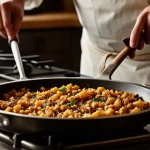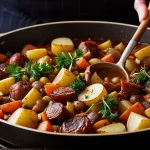What makes handcrafted artisanal cutlery that combines tradition and quality so exceptional?
Handcrafted artisanal cutlery that combines tradition and quality represents centuries of inherited expertise, where each blade tells the story of ancient techniques passed down through generations. According to recent industry data from 2025, the global luxury cutlery market has grown by 23% as collectors increasingly seek authentic pieces that honor traditional craftsmanship. Are you searching for blades that capture both historical significance and exceptional functionality? Continue reading by french artisans specializing in ancient Morta wood preserved for thousands of years exemplify this perfect marriage of heritage and innovation.
What makes Morta wood special for knife making?
In the world of premium artisanal cutlery crafted from rare materials, few substances command the reverence that Morta wood inspires among master craftsmen. This extraordinary material possesses a density that rivals the finest hardwoods, yet carries within its fibers the weight of millennia. Ancient Morta wood preserved for thousands of years emerges from peat bogs across Europe, where oak trees have undergone a remarkable transformation through natural fossilization processes.
Have you seen this : Discover the best chinese novels across genres and styles
The journey from living oak to fossilized treasure spans between 600 to 8,000 years, during which the wood acquires its distinctive ebony-black coloration and remarkable stability. This extended preservation creates a material with exceptional resistance to moisture and temperature fluctuations, making it ideal for knife handles that must endure decades of use. The dense cellular structure, compressed by centuries of anaerobic conditions, provides an incredibly smooth finish that feels luxurious in the hand while offering superior grip properties.
What truly sets Morta apart is its scarcity and the expertise required to work with such ancient material. Each piece tells a unique geological story, bearing subtle variations in grain patterns and mineral inclusions that make every knife handle genuinely one-of-a-kind. Master craftsmen understand that selecting premium Morta requires not just technical knowledge, but an appreciation for the material’s historical significance and inherent beauty.
This might interest you : What impact is the housing crisis having on UK families?
How does traditional French knife making techniques transform raw materials into masterpieces?
The journey begins with an almost meditative selection process, where master craftsmen examine each piece of ancient Morta wood with the reverence it deserves. This fossilized material, preserved for millennia in European peat bogs, whispers stories of forgotten forests through its distinctive grain patterns. The artisan’s trained eye seeks that perfect balance between structural integrity and visual poetry, knowing that handcrafted artisanal cutlery that combines tradition and quality demands nothing less than exceptional raw materials.
Once selected, the traditional knife craftsmanship unfolds through generations-old techniques passed down in French workshops. The forge awakens with controlled intensity as high-carbon steel transforms under the craftsman’s hammer, each strike deliberate and purposeful. This isn’t rushed industrial production but a dance between fire, metal, and human skill that creates the soul of every blade. The steel’s molecular structure shifts and strengthens through precise temperature control, a process that separates true artisans from mere manufacturers.
The marriage between blade and handle represents the pinnacle of this ancient art. The craftsman carefully shapes the Morta wood, revealing its hidden beauty while ensuring perfect ergonomics. Every curve serves both form and function, creating pieces that feel as natural in the hand as they are stunning to behold. The final assembly and finishing touches transform individual components into unified masterpieces that honor both French heritage and the timeless appeal of handforged blade collection excellence.
Which types of premium pieces should collectors prioritize?
Serious collectors should focus on building a diverse portfolio of handcrafted artisanal cutlery that combines tradition and quality, starting with these essential categories. Each type offers unique value and craftsmanship characteristics that define true collector-grade pieces.
Table knives represent the foundation of any serious collection:
- Full tang construction with ancient Morta wood handles
- Hand-forged carbon steel blades with distinctive patina
- Traditional French designs honoring regional heritage
- Limited production runs ensuring exclusivity
Damascus steel folding knives with Morta handles showcase technical mastery through their intricate folded steel patterns and thousand-year-old wood elements. These pieces demonstrate the pinnacle of traditional metallurgy combined with unique natural materials.
Collectors should also prioritize custom forged knives with fossilized mammoth ivory, which represent the intersection of prehistoric materials and contemporary craftsmanship:
- Genuine mammoth ivory scales legally sourced from Siberian deposits
- Hand-forged blades shaped using centuries-old techniques
- Individual certificates of authenticity and provenance
- Custom leather sheaths crafted specifically for each piece
Finally, limited editions featuring collaborations between master craftsmen offer exceptional investment potential while celebrating the artistry of traditional knife craftsmanship passed down through generations.
How long does it take to craft a handmade knife and why does this matter?
When you hold exceptional artisanal cutlery that tells a story, you’re experiencing the culmination of weeks or even months of meticulous craftsmanship. A simple fixed blade might emerge from a custom cutlery workshop after three to four weeks of dedicated work, while a Damascus folding knife with intricate Morta wood inlays can demand up to three months of patient labor.
The forging process alone represents just the beginning of this temporal journey. Selecting and preparing ancient fossilized wood requires careful evaluation, as each piece of Morta has been naturally preserved for thousands of years and deserves respectful handling. Heat treatment follows precise cycles that cannot be rushed, with multiple tempering sessions spread across several days to achieve optimal blade hardness and flexibility.
This extended timeline directly correlates with exceptional quality that mass production simply cannot replicate. Every hour invested in traditional knife craftsmanship translates into superior edge retention, perfect balance, and the distinctive character that makes handcrafted pieces treasured heirlooms rather than disposable tools.
How should discerning owners care for their heritage knife collection?
Owning handcrafted artisanal cutlery that combines tradition and quality requires a thoughtful approach to maintenance that honors the craftsmanship invested in each piece. The delicate nature of heritage knife making demands specific care protocols, particularly when dealing with precious materials like ancient Morta wood handles that have been preserved for millennia.
Proper cleaning begins with understanding the unique properties of each component. Morta handles should never be submerged in water, as this ancient fossilized wood can absorb moisture and potentially crack over time. Instead, clean these handles with a slightly damp cloth followed immediately by thorough drying, then apply a thin coat of specialized wood oil designed for fossilized materials. The blade itself requires gentle hand washing with mild soap and immediate drying to prevent any oxidation, especially important for Damascus steel pieces where the intricate patterns can trap moisture.
Storage plays a crucial role in preserving your collection’s integrity. Each knife should rest in its authentic leather sheath, which not only protects the blade but also allows the natural materials to breathe properly. Keep your collection in a climate-controlled environment away from extreme temperature fluctuations that could cause the Morta wood to expand or contract unnaturally, potentially compromising the handle’s structural integrity over generations.
Your questions about exceptional pieces
What makes Morta wood special for knife making?
Morta wood comes from ancient Morta wood preserved for thousands of years in peat bogs, creating unique patterns and exceptional durability that makes each handle truly one-of-a-kind.
How long does it take to craft a handmade knife?
Our handcrafted artisanal cutlery that combines tradition and quality requires 2-6 weeks depending on complexity, with Damascus pieces taking longer due to intricate folding techniques.
What’s the difference between Damascus and forged knives?
Damascus steel features distinctive watered patterns from folded layers, while forged blades focus on traditional knife craftsmanship with single steel construction for optimal strength.
Why are handcrafted knives more expensive than mass-produced ones?
Each piece involves hours of manual work, premium materials like fossilized wood, and generations of expertise that industrial production simply cannot replicate.
Can you create custom knives based on my specifications?
Absolutely! We offer bespoke services including personalized engravings, specific handle materials, and custom forged knives with fossilized mammoth ivory for truly unique commissions.







